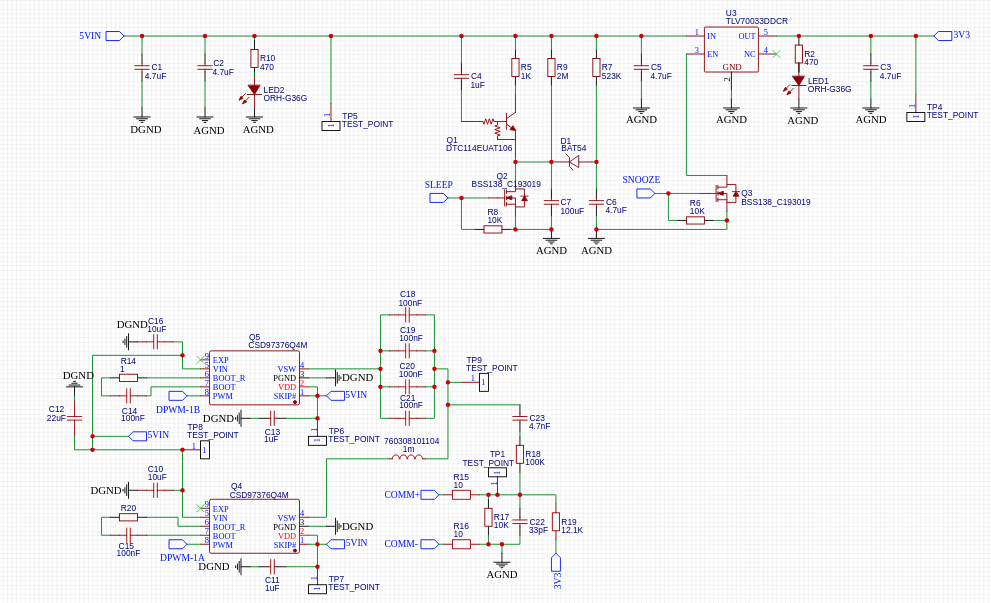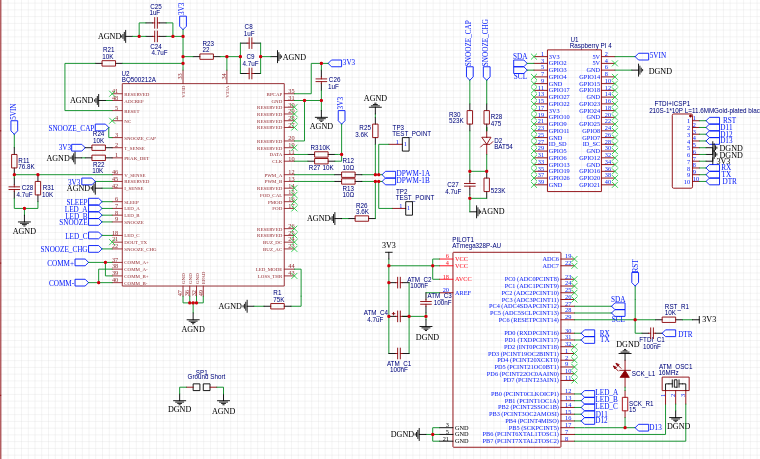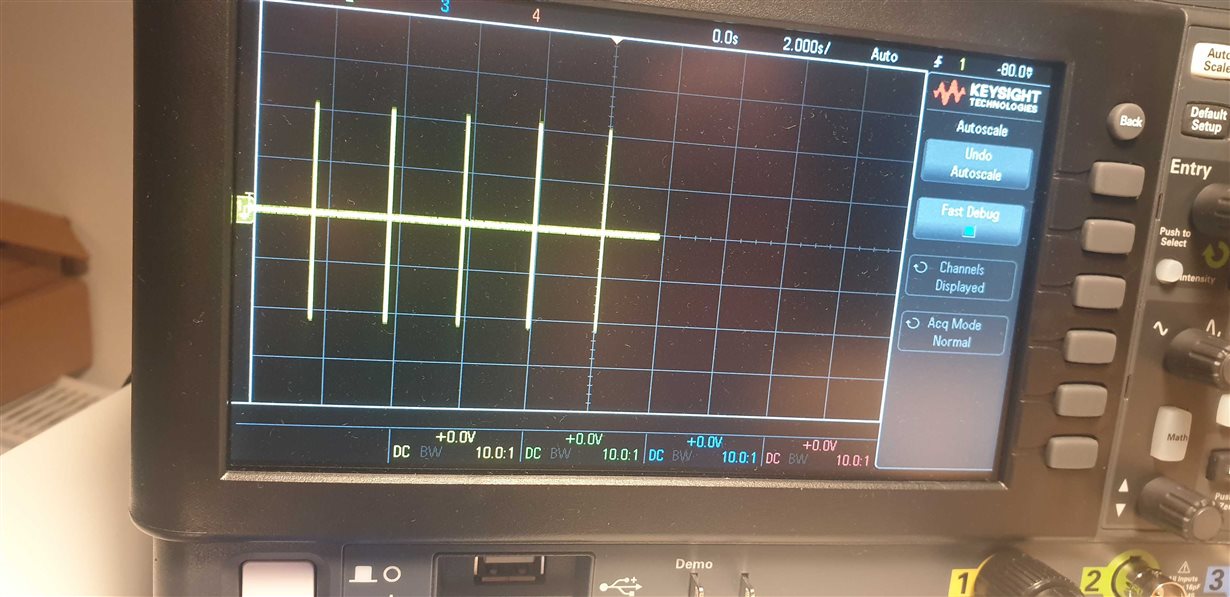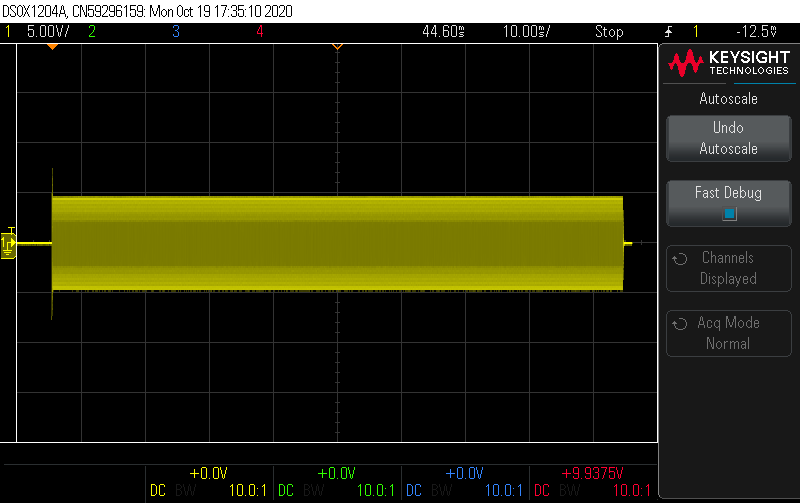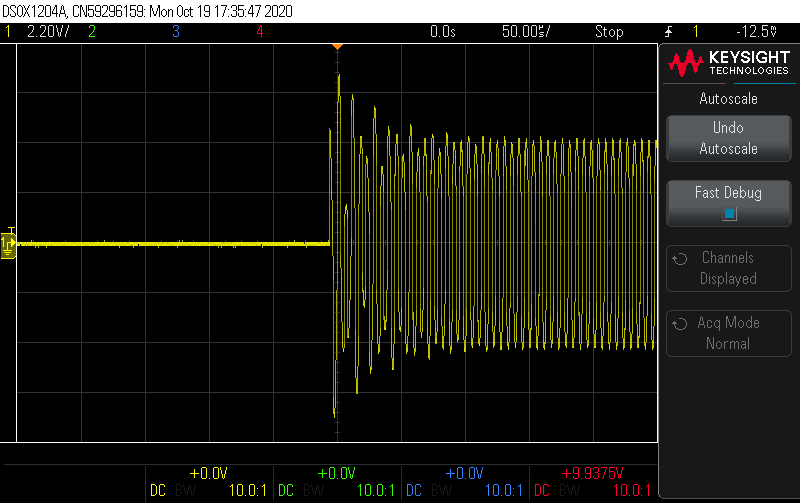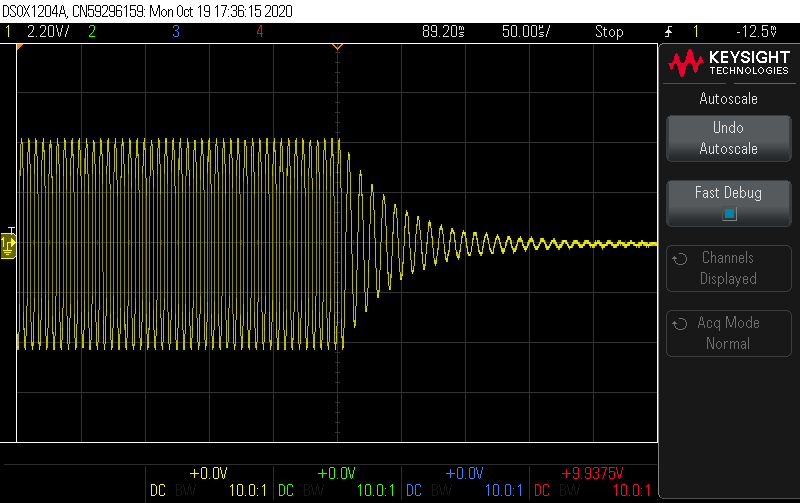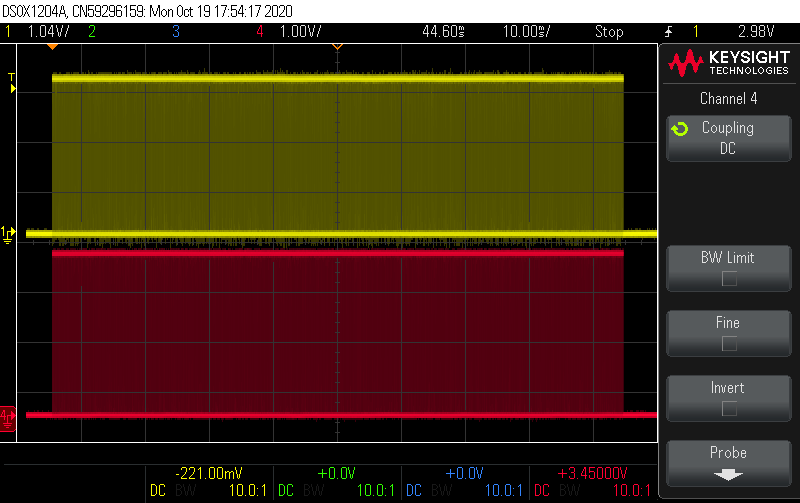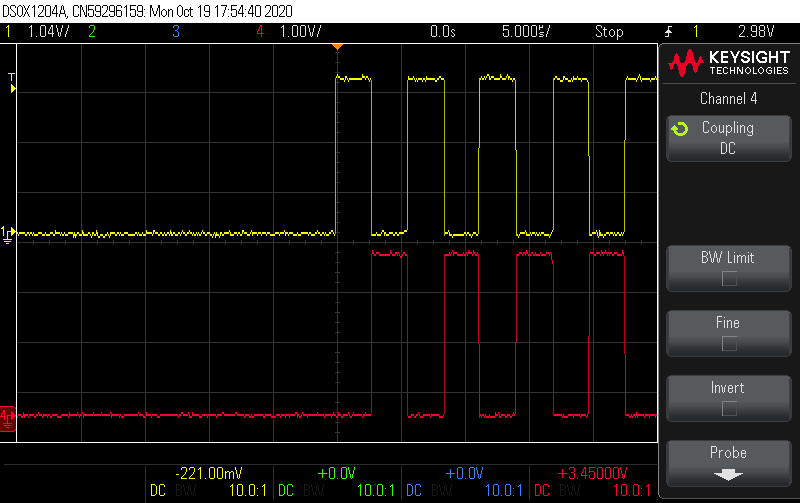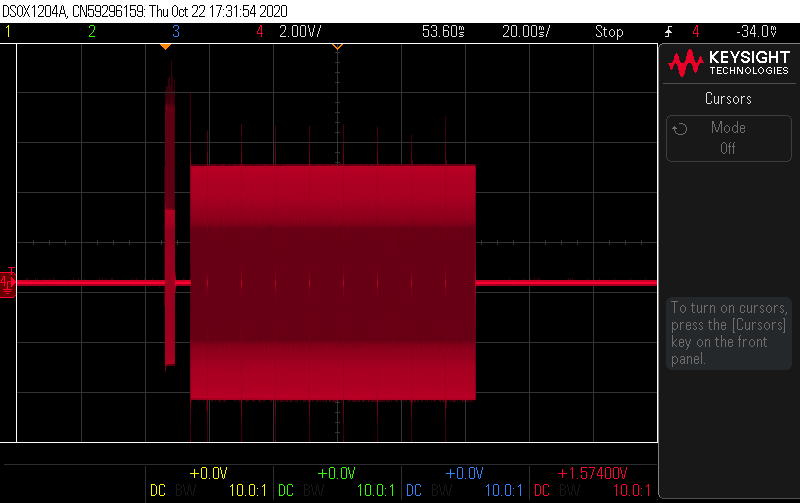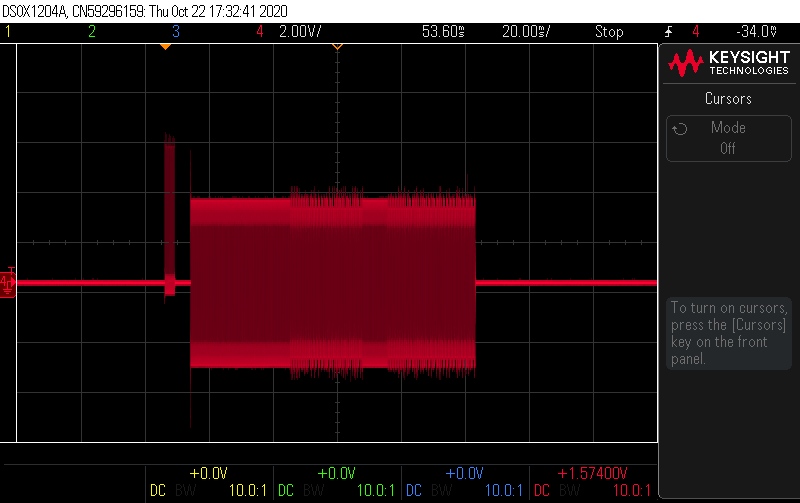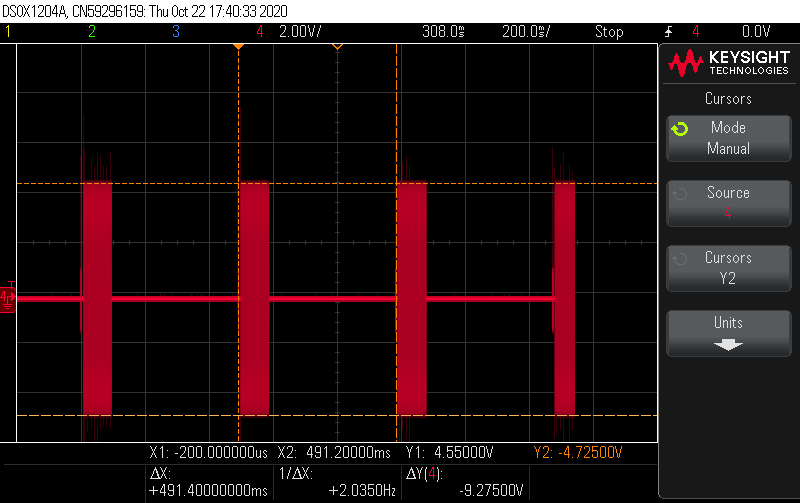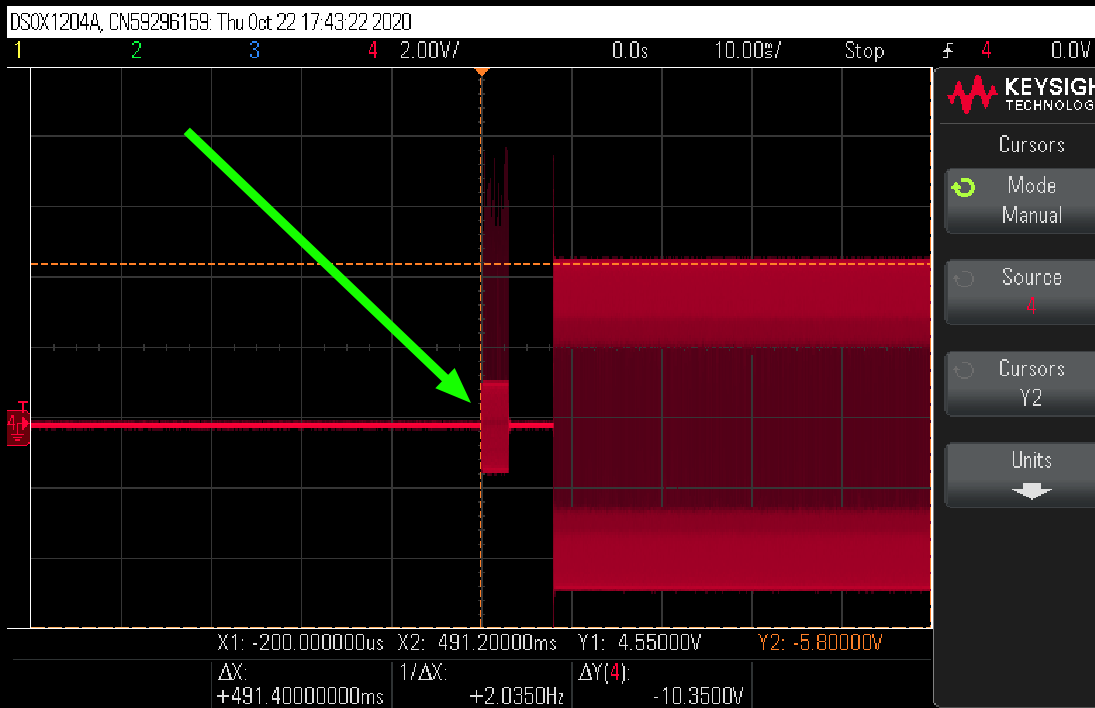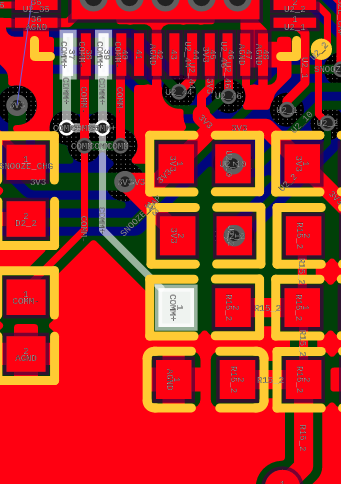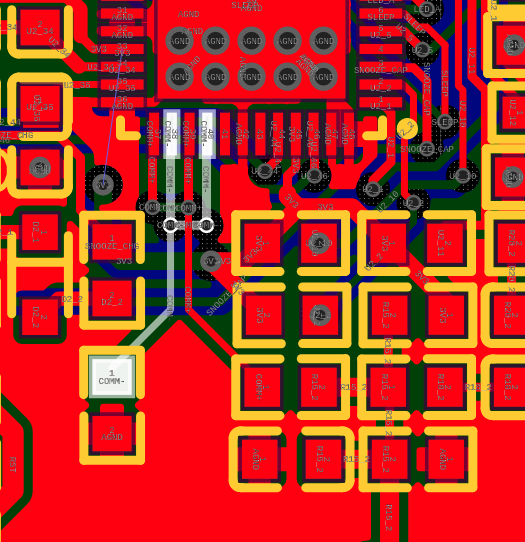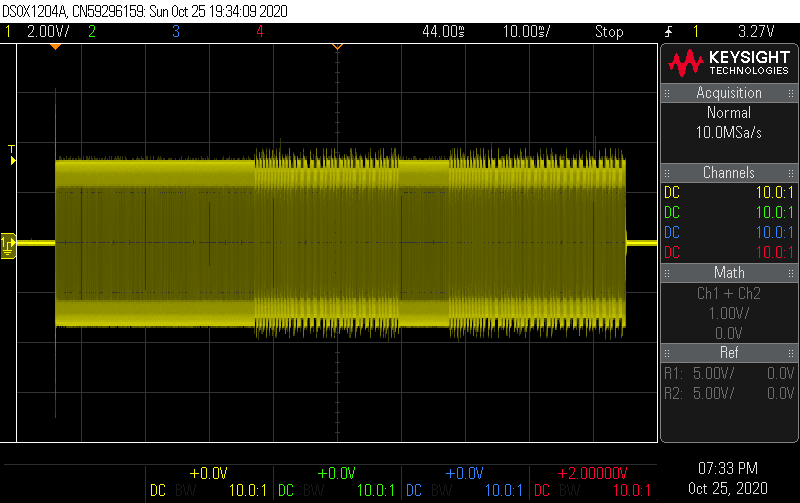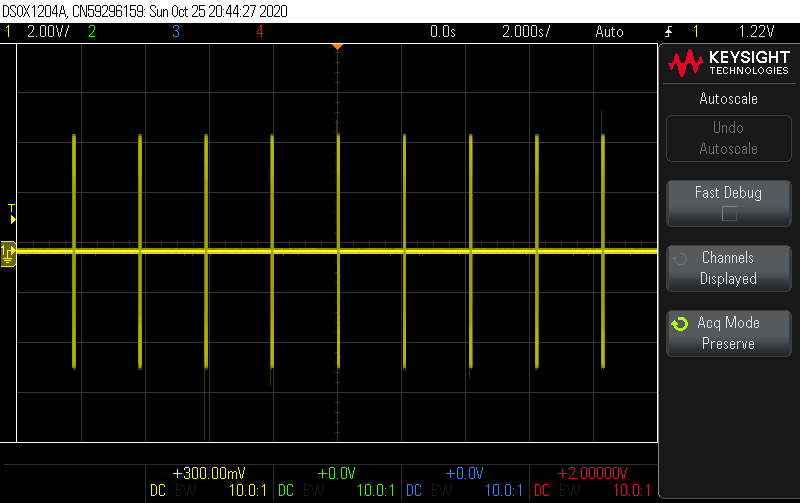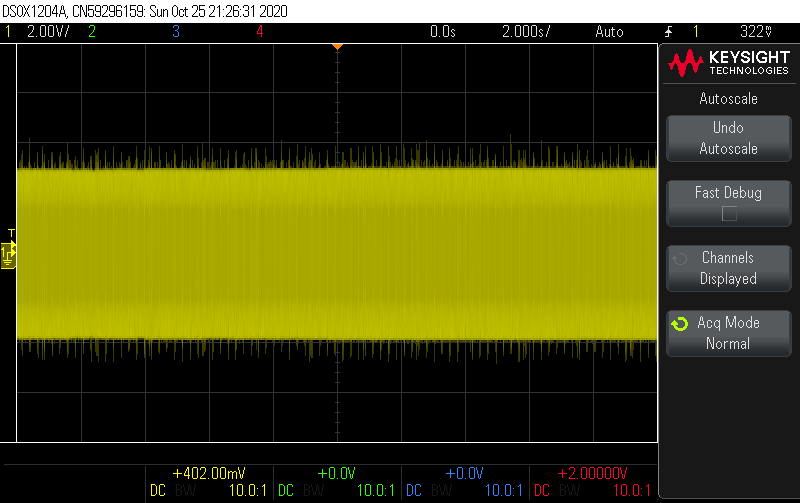Hello,
First of all, I know that this chip is not intended for new designs, but I have a big batch and I need to solve this (probably stupid and small) design issue, so please help. I am a student and it helps me learn.
I am building a charger for a small hand-held wireless device.
I have followed the EVM and printed a PCB. Unfortunately, after assembly, the chip does not seem to respond or even power on.
My schematic is here:
My layout is here
The first problem is that the 3v3 ldo never seems to come up, thus the chip never comes up.
The second problem is that even if I hardwire a 5V wire to the LDO EN, the chip still won't come up.
I have an oscilloscope and I tried to check every chip input and it resulted in this:
Note that PMOD, FMOD, T_SENSE and I_SENSE are not meant to be used for this.
On top of this, I see not PWM output from PWM pins or anything near the two half bridge mosfets.
Finally, I tried to make sore this is not a soldering problem:
Here is a topic of discussion about this. In the meantime I assembled a secondary board to make sure.
Any thoughts?
Any help would be useful for learning


